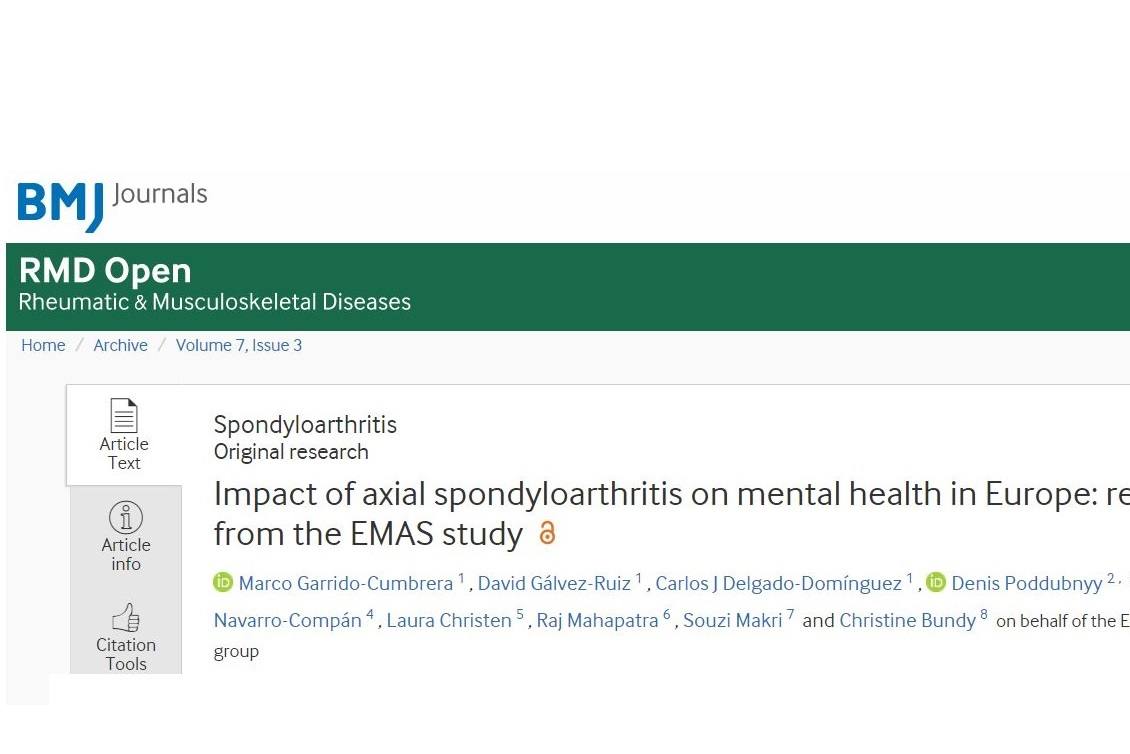Impact of axial spondyloarthritis on mental health in Europe: results from the EMAS study
Marco Garrido-Cumbrera, David Gálvez-Ruiz, Carlos J Delgado-Domínguez, Denis Poddubnyy, Victoria Navarro-Compán, Laura Christen, Raj Mahapatra, Souzi Makri, Christine Bundy on behalf of the EMAS working group
RMD open. 2021
Objective
To determine the presence of mental disorder risk and associated factors in European patients with axial spondyloarthritis (axSpA)
Methods
Data from 2,166 patients with axSpA in 12 European countries were collected from 2017 to 2018 through the European Map of Axial Spondyloarthritis online survey. Risk of mental disorders was assessed using the 12-item General Health Questionnaire. Possible predictors included age, gender, relationship status, patient organisation membership, job status, educational level, Bath Ankylosing Spondylitis Disease Activity Index (BASDAI), functional limitation (0-54) and self-reported depression or anxiety. Bivariate analyses were conducted to determine predictors of risk of mental disorders (Mann-Whitney and χ2) and multivariable analysis identified factors associated with risk of mental disorders.
Results
60.7% of patients reported risk of mental disorders: they were younger (41.7 vs 46.0 years), more likely female (68.2% vs 57.9%), unemployed (7.5% vs 2.7%), on temporary (15.9% vs 5.4%) or permanent sick leave (13.2% vs 8.0%), reported depression (45.2% vs 14.2%) or anxiety (41.3% vs 12.5%), higher disease activity (BASDAI ≥4; 87.6% vs 62.3%) and functional limitation (16.5 vs 10.8). The factors most associated with risk of mental disorders were disease activity (OR=2.80), reported depression (OR=2.42), anxiety (OR=2.39), being unemployed or on sick leave (OR=1.98), functional limitation (OR=1.02) and younger age (OR=0.97).
Conclusion
Compared with the general population, patients with axSpA show disproportionately worse mental health associated mainly with disease activity and employment status. Healthcare professionals should pay close attention to patients with high disease activity and address internally or refer to specialist services, where appropriate to ensure optimal patient outcomes.








